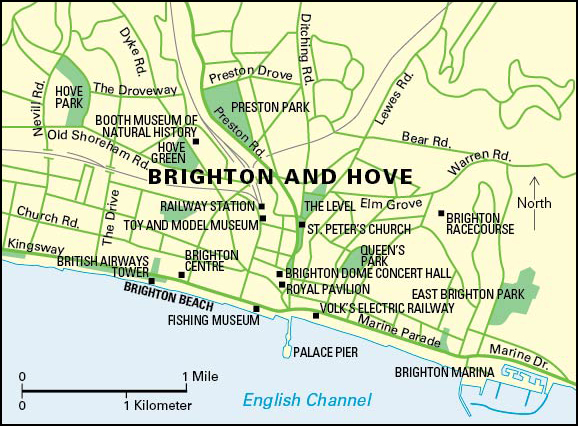Brighton and Hove (pop. 277,103) is a city on the southern coast of England. Its pleasant climate and location along the English Channel attract many vacationers. Brighton and Hove lies about 60 miles (97 kilometers) south of London.

The city’s most famous landmark is the Royal Pavilion. This ornate building was constructed as a home for the Prince of Wales (later King George IV) in the late 1700’s and early 1800’s. It is now used for concerts and social events. Antique shops, cafes, and restaurants line the narrow streets of the Lanes district near the waterfront. A marina and recreation complex are along the shore. The Seafront and the Palace Pier serve as promenades.
The University of Brighton is in the center of the city, and the University of Sussex lies on the outskirts of Brighton and Hove. Brunswick Square, famed for its Regency architecture, is on the west side of the city.
Brighton began as a small fishing village. It became a fashionable health resort when British aristocrats began vacationing there in the late 1700’s. In the 1800’s, rail transportation made Brighton a favorite vacation spot for middle- and working-class people.

Originally, Hove was a separate village. During the 1800’s, it grew into a prosperous Victorian town. Brighton and Hove became a unitary authority (local government area) in 1997 and received city status in 2000.
